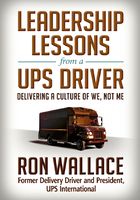One of the hardest decisions aspiring entrepreneurs have to make is deciding when to start up. It's not always so easy to know. One must ask: What's my product or service? Does it solve a problem? When do I leave my full-time job, or, simply, how do I get started?
Often, when I'm speaking on college campuses, students looking to become the next Mark Zuckerberg ask me how they'll know when an idea is good enough. I recall vividly a class I addressed at the University of British Columbia in 2005 that was focused on business models, and start-up models in particular. Students were searching for signs that they had the "next big thing." They were energetic and inquisitive, and I really enjoyed the dialogue with them. Their eagerness and enthusiasm is the reason I try to make myself available to students on campus. They seek guidance based on real-life experience and are ready to soak up information. Like the Nike slogan, I tell them, "Just do it." It's the only real way to learn.
After this class in Vancouver, a young man came up to me to ask how he'll know it's time to "just do it." I could see by the perplexed look on his face that he had no idea of how to develop the right idea to create a business. To understand a bit of what his interests were, I asked him what he enjoyed doing most. After a short discussion about game apps, I could hear that what drove him was the creative software process. That's when I told him what I believe to be true for entrepreneurs in search of the next big thing: "You'll know when you've got the right idea. It simply will capture your imagination and never let you go."
For those who have full-time positions, it's a hard decision to leave the safety of a regular paycheck and strike out on their own without a safety net. Financial insecurity frightens us all. Every entrepreneur has to know his or her own tolerance for risk, financial and personal. It's an individual decision each person must make. Fortunately, many have found a way to work on their ideas, test the market and develop contacts in the business sector, and to network among others who have already taken the leap, all before they leave a permanent post. There is comfort for many in starting this way. For those in this position, Kelly Fitzsimmons offers advice in her article "Ten Signs You're Ready to Quit Your Day Job."
It is an obsession with an idea that drives people to make the leap into entrepreneurship. Starting a business of your own is not for the faint of heart. Yes, I realize that some start out in business because options for them are limited, or because circumstances have changed within a company, and doing something is better than doing nothing. Whatever the reason, I applaud the ingenuity in creating a lifestyle business. But even then, there must be a real drive to see the product or service through. Competitors abound, whether you're starting up the next great restaurant or the next Angry Birds. If you want to know if your idea has legs, Denise Brosseau offers sound advice in her article "How to Sell Your Ideas."
Many people don't really know how to start up a company, but instead start by working on a hobby part-time while still employed. Good advice for part-time and early-stage companies comes from Ellie Cachette in her article "Bootstrapping: Five Tips." Not ready to leave that full-time job yet? You can still refine your entrepreneurial skills as described by Marcia Zellers's article, "Trapped in a Big Company? What's an Entrepreneur to Do?"
In this first chapter of Been There, Run That, founders in our Springboard community share with readers their experiences of starting up. They share ideas from how to bootstrap a start-up on little cash and a lot of sweat equity to sage advice on forming partnerships and how to avoid dangerous pitfalls. I hope their wisdom gives you comfort. Hard-learned lessons are theirs to share.
Ten Signs You're Ready to Quit Your Day Job
Kelly Fitzsimmons
The day job is the bane of many an entrepreneur. Here are ten signs you're ready to ditch it.
That day job can be a killer. And often, it's not just that you're itching to work full time on your start-up. It's that the day job is making you miserable all on its own.
We often talk about the Peter Principle, which holds that people get promoted to their level of incompetency. But there is another way, and it's worse. Sometimes, we remain competent but fail in another and worse way. We become lifeless shells of our former selves, persevering in the name of personal growth and development… and hating it all the way.
Here are ten telltale signs that you are ready to leave your day job. Mind you, these are not ten signs that you are ready to be an entrepreneur. But they will tell you that your day job, at least, is not working out.
1. You've heard yourself say, repeatedly, "The pay just isn't worth it."
2. Those nearest to you say you've changed, and not for the better.
3. No matter what, you wake at 3 a.m. in a cold sweat, trying to solve a work-related problem.
4. When you talk about your job, you get bored, break into a sweat or change the subject.
5. You've taken more sick days than vacation in the last year.
6. You don't want the day to start, making it a struggle to get out of bed.
7. You start fantasizing about a car accident, serious illness or some other event that would put you in the hospital for months, giving you, in effect, a guilt-free vacation.
8. You've accepted the fact that you're miserable, but you won't even contemplate leaving because you're worried about what will happen to others if you quit.
9. You have persistent nausea or a heightened emotional state most days.
10. Before arriving at the office, you take several deep, long breaths to steel yourself for the day-every day.
If you can see yourself in this list-if many of these resonate with you-you are harming yourself. Harming yourself is failure. You are failing to live a happy and productive life.
One of my most competent friends said that her executive coach had to tell her to quit, repeatedly. She said she needed someone else to validate that it was OK to leave. Well, I'm happy to be that someone else. Print out this list and show it to your boss if you have to. Email me if you want me to sign it.
KAY'S TAKEAWAYS:
The signs are all around you-take notice.
The most important indicator that you're ready to quit your day job is simply that you don't like waking up to the challenges of the day, whatever they are.
How to Sell Your Ideas
Denise Brosseau
You've got all your employees excited about your vision. Now, it's time to convince the rest of the world.
To make a difference in your company and your market, you have to get others to accept and promote your ideas. You're already a leader in your company. The next step is to become a leader in your niche-to use your ideas to influence an entire market, and to help your vision of the future take hold. As an executive talent agent working with senior executives and CEOs, I encourage my clients to get out of the office and start building visibility, credibility and reputation.
I subscribe to the VRE formula for success: Begin with a well-tested and honed vision, accumulate a track record of executing successfully and then get out of the office to build the right relationships and share your ideas. Here's how to begin.
Vision: Getting out there
Just as you test products before bringing them to market, you need to test your ideas before trying to become an evangelist for them. So try explaining the kernel of your big idea to appropriate stakeholders to get their input. Once you're confident that you can get others to understand and accept your basic idea, try reframing it so that it tells a bigger story that engages others.
The next step is to find speaking opportunities that will let you champion your vision. There is an aura of trust around the person on the dais or behind the microphone. That's earned by having something meaningful and memorable to say. Without that invitation to speak outside of our organization, we often don't take the time to gather the evidence and anecdotes that give us credibility and help convert others to our point of view.
Relationships: Why conferences and boards matter
Identifying and nurturing relationships-with investors, advisors and potential employees-will allow you to spread your ideas much more quickly.
Attending conferences and serving on boards are great ways to test and refine your vision, and to meet the people who can make it happen. Start by thinking about the people you want to learn from or influence. Then split them into A and B lists, and identify the people on the A list whom you most need to meet within the next three years. Which events do the A players attend, and which boards are they a part of? Who can help you get the right invitations to those opportunities?
Execution: Your track record
People will remember you and come to rely on you if you do what you say you will do. That's enough to put you ahead of the pack in pretty much every situation.
That does not mean you have to do everything yourself or work 24/7. Sure, it's easy to think, "Oh, I can do this faster (or better) than anyone else." Before you know it, it's 1 a.m. Again. So make the most of virtual assistants, crowdsourcing, online cloud services and the creation of a "do not do" list.
Deadline: One year
Create a one-page plan-now-that will help you stay focused on the right opportunities to build visibility, credibility and reputation this year.
Then share it with a few of your key supporters and mentors. Why? Well, I was recently asked by one of my champions to refer some candidates for a for-profit board position. I happily forwarded three names. She called me back to say, "What about you? Didn't you have on your one-page plan that you wanted to join a for-profit board this year?" Oops! Yes, I did. But it had never occurred to me to put my name forward. And yes, now that part of my plan has become a reality.
KAY'S TAKEAWAYS:
Understand your concept and refine your pitch, then find opportunities to speak about it in order to create visibility.
Do what you say you will do, so make strategic choices for what to agree to.
Know when to say no thanks, or not right now.
Create a plan, vet it with your supporters, set deadlines and then take credit for your successes!
Bootstrapping: Five Tips
Ellie Cachette
Bootstrapping means managing your time as closely as your money. Here's how to do it.
While venture-backed tech start-ups seem to get all the press, there are many, many ways to start your company. Some entrepreneurs do it while hanging on to their day jobs full time. Some use the money they've saved to give themselves a defined runway (i.e., I get six months to accomplish these three things; otherwise, I move on). Others seem to rely exclusively on hustle and luck. Here's what I've learned about one of the less glamorous forms of funding: bootstrapping.
1. Press
Having press access can get you far. Knowing the right people or having access to conferences and parties can sometimes be all that it takes to make a life-changing connection. Try to get as many speaking or writing events as possible. How is that possible early on? Start small, think about something you know about, and work from there. Know only about exotic turtles? Blog about turtles. Find a blog about turtles and guest post. Try to get a free pass to a turtle conference. There's nothing the world loves more than experts. You have to start somewhere.
2. Time
In the beginning, you will think that there is a competitor secretly working in the middle of the night ready to steal your idea. But the start-up game is not necessarily about being fastest or first to market. It's about being smarter.
Time will be your most limited resource.
Block off chunks of time for certain things so you are not wasting energy moving from place to place.
Leave mornings open for operational chores. Preserve afternoons for face-to-face meetings.
3. Travel cheaply
Traveling cheaply is an art and starts with a great network and a smart approach.
Keep your travel dates flexible, bite the bullet on layovers, and build loyalty miles in as many ways as possible.
Couches are your friend. They are cheap and give you time to catch up with friends and colleagues in ways you normally wouldn't. Upon first arriving in New York, I stayed on a very influential entrepreneur's couch. Not only did I have a comfy place to sleep, but I learned a lot about the community and launching a start-up just from midnight chats.
4. Advisors
Advisors can be a source of "free" or equity-only expert advice. Without a retainer or hourly billing rate, you can get top-notch ideas and support without feeling the burden of a big bill. Many times start-ups search for advisors who "look good" on paper, but early on, that may not be what you need. Look for people who are available part-time, but are still accessible for those company-changing decisions.
5. Community
As an entrepreneur, giving back-at all times and in whatever way you can-should be your No. 1 job. Funding and money are glamorized by the media, but to reach your milestones you will need support from your community. Need more users or testers? Community. Need to find that cofounder or advisor? Community. Are you a hardcore coder? Build a friend a widget. Are you a master marketer? Help another start-up with a campaign.
Above all, the key to bootstrapping is being creative. Get the most done with the least and keep a smile on your face. Bootstrapping is about never counting on funding. Funding is a mysterious and weird animal that is difficult to predict. Odd as it sounds, many entrepreneurs will tell you that some of their favorite memories are from back in the day when times were lean. Enjoy it, because one day you might get that big funding or bring in senior executives. Before you know it, those nights on friends' couches will seem too far away.
KAY'S TAKEAWAYS:
When running a company on very little money (bootstrapping), guard your time-your most limited resource-as closely as your cash. Prioritize.
Establish yourself as an expert to gain visibility and use all media.
Build your human capital network (mentors, press, community). It will pay off.
Where Are All the Women Entrepreneurs?
Denise Brosseau
Sure, women start lots of companies. But where are the big, world-changing businesses run by women?
I get this question all the time: Where are all the women entrepreneurs? I guess the people who ask figure I should know: I'm the cofounder of the Forum for Women Entrepreneurs and cofounder of the Springboard Venture Forums, and I've helped women raise over $5 billion for their businesses.
My response is simple: Statistics show that women in the U.S. start companies at a very brisk pace compared to their male counterparts. The question that remains interesting-and is less frequently asked-is why are so few women starting big companies? Even women who have started businesses that get outside funding do not tend to end up with businesses as large as those run by men.
After more than twenty years of meeting with, advising and learning from women entrepreneurs, I believe that women either do not like or do not feel comfortable spinning a big vision.
An incremental business will not change the world.
If you are seeking outside funding, you are asking potential investors to put money into your idea above all others. To do that, you need a big vision. Most people are inspired to invest in big ideas that can change the world instead of small, incremental ideas that will likely happen without their help. If you have dollars to put to work, wouldn't you be more excited to be able to say you are funding the next SpaceX or iRobot or Zipcar (the latter two were cofounded by women, incidentally) rather than another small services firm? I would.
But something happens when women put together their investor pitch or think critically about their businesses. They actually want to understand exactly how they are going to get from Point A to Point Z and they want to explain to an investor the steps (B, C, D) they will take and exactly how they will spend the money they raise.
This sounds like a good thing, but it pushes the entrepreneur to think small, and to designate their Point Z as only a few steps into the future and on a path that is clearly visible to all. In most cases, this is neither exciting nor inspiring. It is just an incremental business that will not change the world.
Robin Chase, cofounder of Zipcar, tells the story of her meeting with the dean of MIT's Sloan School of Management (of which she is an alumna) to get his input on her business idea. After he saw her pitch, he got very excited, but he immediately pushed her to think much bigger. She recalls sitting down with her cofounder in a coffee shop at the meeting. The two just looked at each other… shocked and a bit scared. Could they do it? Should they do it? After a lot of soul searching, they did, and Zipcar was born.
Work backward from the future.
If we're going to see a change in the number of big businesses founded by women, they will have to get comfortable spinning a much bigger story. They'll have to ask themselves questions like:
What if I had ten times the amount of money I am asking for; what would I do with it?
If we could really dream big about changing this industry/niche, what would we do?
What's the "What If?" future we'd like to bring about?
Then, work backward from those possibilities to clarify the broad strokes and milestones that need to be met to get there. It isn't about smoke and mirrors. It is about admitting that you don't know every step that lies ahead of you, and trusting that you'll figure it out.
Get help from those who have come before you.
There is a funny dance in this start-up process that often feels very uncomfortable. We have to push ourselves to think big and then not become so overwhelmed by the big idea that we get stopped in our tracks. It is important to ask for help, to surround yourself with big thinkers and others who are ahead of you on the start-up path, and to constantly test and verify your assumptions. And, as women, don't just talk to other women. Find some men who can serve as advisors, too.
Women are the key drivers of the economy. We should also be the leaders that create the solutions to the world's big problems and lead the companies that bring those solutions to market. If we can conquer this big vision challenge, I believe we are poised to do just that, and to change the world forever.
KAY'S TAKEAWAYS:
The best ideas are transformational, not incremental.
Women need to envision the future, then start from scratch to work toward executing the vision without having all the answers first.
Surround yourself with the best thinkers.
How to Write a Pre-Nup for Your Partnership
Laura McCann Ramsey
Sure, everything seems rosy now. But when you and your cofounder no longer see eye to eye, you'll be glad you did the paperwork early on.
Entrepreneurship is not for the faint of heart. Many of us, understandably, want a partner or cofounder at our side. But after twenty years, four companies and six partners, I've learned that partnering doesn't solve everything, and often introduces its own difficulties. Here are six rules that will help you set the groundwork for a great partnership-and a decent breakup, should you need one.
Imagine "the end."
Don't agree to partner with anyone, or take on a partner, until you are clear in your own mind and on paper about how you would choose to end your business. The partnership agreement is going to be the equivalent of your business pre-nup, and now is the time to think about what happens in the event of a separation or divorce. Your buy-sell and partnership agreements should clearly spell out every potential scenario.
Just having this conversation will reveal more about your potential partner then you could ever imagine-or maybe more than you want to know. The best partnerships are built around clear and specific roles, operational guidelines and legal contracts.
Tough talk, not love talk
At the beginning, it's great to be in love with your partner. Your partner will undoubtedly be the person you spend the most time with, share secrets with and grow your business with-unless you grow to hate them. Have tough conversations before committing, and explore every possible relationship and business outcome you can think of: What if you work harder? What if they work smarter? What if they bring in the money? What if it was your idea? What if your partner wants to leave? What if the investors want only one of you to stay? Good partnerships set the foundation for a better breakup with honest, open communication. No scenario is too uncomfortable to consider. Anything can happen, and it probably will.
Who's the boss?
Don't gloss over your job descriptions. Think of the contingencies: You swap roles, one of you steps away or a family matter takes all your attention. Can your buy-sell agreement handle all of these?
Review your job descriptions every six months, and keep them updated. Working on your partnership is part of your job. Make it part of your mission statement.
The paper trail
Every partnership should be built one document at a time. Don't skip over any details, even if they seem like a pain in the neck at the time. And put it all in writing, especially your concerns. Keep a paper trail. Print everything important and relevant to the pulse of your relationship and put these documents in a file. You might not like to think about it now, but when you most need this information, you may not have access to your computer or company email.
My attorney
If you and your partner get into a dispute, your company's attorney can't take sides and shouldn't. So when things get tense, your partner's attorney will be sitting across the table. You need your own personal attorney. You need someone who not only understands how to build businesses, but has experience closing them down.
When you meet with your attorney, skip the storytelling-you're paying by the hour. Just get clear on your legal standing, and what you can and can't do to get your partnership on track or end it.
The partnership advisory board
While the ultimate decision about who to take on as a partner is yours alone, you still need a personal set of advisors. These can be your attorney, entrepreneurs who have been through partnerships themselves or a life partner-who probably knows more about your partnership than anyone else. These are the folks who will watch your back and can help you decide whether to love, mediate or leave your partnership.
Ultimately, you are accountable for everything about your business, even picking your partner. So choose wisely and prepare that pre-nup.
KAY'S TAKEAWAYS:
In the beginning, imagine the end. Create the agreements and a plan in case you need to dissolve the partnership in the future.
Set up ground rules with well-defined roles and operating agreements as well as legal contracts to support them.
Document important conversations, as well as concerns, and keep copies off-premises in case you are not able to access the office.
Trapped in a Big Company? What's an Entrepreneur to Do?
Marcia Zellers
Here's how to become an entrepreneur-in-residence-even if that isn't your official title.
At some time in your career, you're likely to be an entrepreneur trapped inside a large corporation. Unless you've sold your last company and have a fat bank account, the reasons for this are probably financial-you've got kids to support and a mortgage to pay. What's an entrepreneur-at-heart to do? Feed your soul and aid your company by becoming an entrepreneur-in-residence.
In the classic sense, I've been an entrepreneur twice-first in 1999, then in 2008. You'll notice that in both cases, my timing was perfect: for an economic meltdown. While incubating my next passion-Tootzypop, a daily blog, email and community for women over forty-I'm working as an entrepreneur-in-residence at FIDM/Fashion Institute of Design & Merchandising, where I head the digital marketing department. I run my group as if it were my own business. I get big ideas, better returns and more motivated employees by practicing the following:
Pretend you work in a start-up.
Don't think of yourself as a cog. You're the start-up CEO of whatever you control at your company. Ask yourself how you might do your job differently if you applied the zeal and wiliness of a start-up CEO day-to-day. Take a risk, do things differently, have an uncompromising belief that you will succeed, and you'll be surprised at how differently you'll approach your work.
Encourage inspiration.
Young, entrepreneurial companies are often cash-strapped, but they offer their employees the opportunity to be a part of something rich with possibility. Even within a big company, you can create ways for your team to inspire and be inspired:
Encourage new ideas and create a forum for your employees to share them publicly.
Host an innovation summit, and charge your team with investigating and reporting on the cutting edge of your industry. Then brainstorm related innovations for your business.
Send your staff to conferences that are outside their direct functional area but that will infuse them with new ideas and motivation. (Don't forget to send yourself!)
Never be afraid that an employee's ideas will overshadow your own. Their great ideas are an indication that you are indeed fostering the right entrepreneurial spirit.
Start a side project.
Chances are you've got a few new business ideas brewing. Yes, that full-time job takes up most of your time-but most likely you can squeeze a few extra hours out of the week.
Don't feel you need to launch a full-fledged company right away: Break your idea down into manageable chunks and start with what you think is doable. Slowly add additional elements as you're able.
If your idea is successful, you'll experience an entrepreneurial high that will motivate you to squeeze a few more hours out of your week. It might even give you the courage and the means to take it on full time. If it doesn't work, that's good experience, too: For serial entrepreneurs, failure is a badge of honor, proof of their ability to embrace risk. Whether you succeed or fail, you'll acquire new skills.
Accept failure.
Entrepreneurs are idea people who cultivate an environment of experimentation. Young companies also tend to have flatter hierarchical structures and easy access to the CEO, which can promote camaraderie and openness. In the best of these environments, new ideas can flourish. It's accepted that many won't work, but that they may still lead to valuable new products, patents or business processes.
Encourage your team to try new ideas. Expect a certain failure rate, and make sure those who fail are rewarded for the effort rather than punished for a disappointing outcome.
Set aggressive benchmarks.
Most young companies feel capable of great things, and they set goals accordingly. If they've taken venture capital, they're under even more intense pressure to set and meet aggressive milestones. Whether you're a department of one or many, write an ambitious but doable "business plan" that holds you and your team to a higher standard. Be specific and measureable about how you plan to reach these more aggressive goals, and make sure everyone understands their role. Cap it off with an "executive summary" that clearly explains what your charge is as a department or organization, what your new goals are, and how you'll reach them. Give everyone in your department a copy of the plan and have them review it often.
To me, "entrepreneur" is a personal quality as much as it is a business status. If you truly want to be one, most likely you will find a way to make it your title and lifestyle. Meanwhile, you can get a lot of satisfaction for yourself, and mileage for your company, out of an entrepreneurial approach to your current career.
KAY'S TAKEAWAYS:
It is possible to function as an entrepreneur within a large organization.
Work as if you run a start-up, and encourage the exchange of new ideas within your department.
Create a comprehensive and challenging business plan; review it with your stakeholders often, and don't be afraid to fail.















